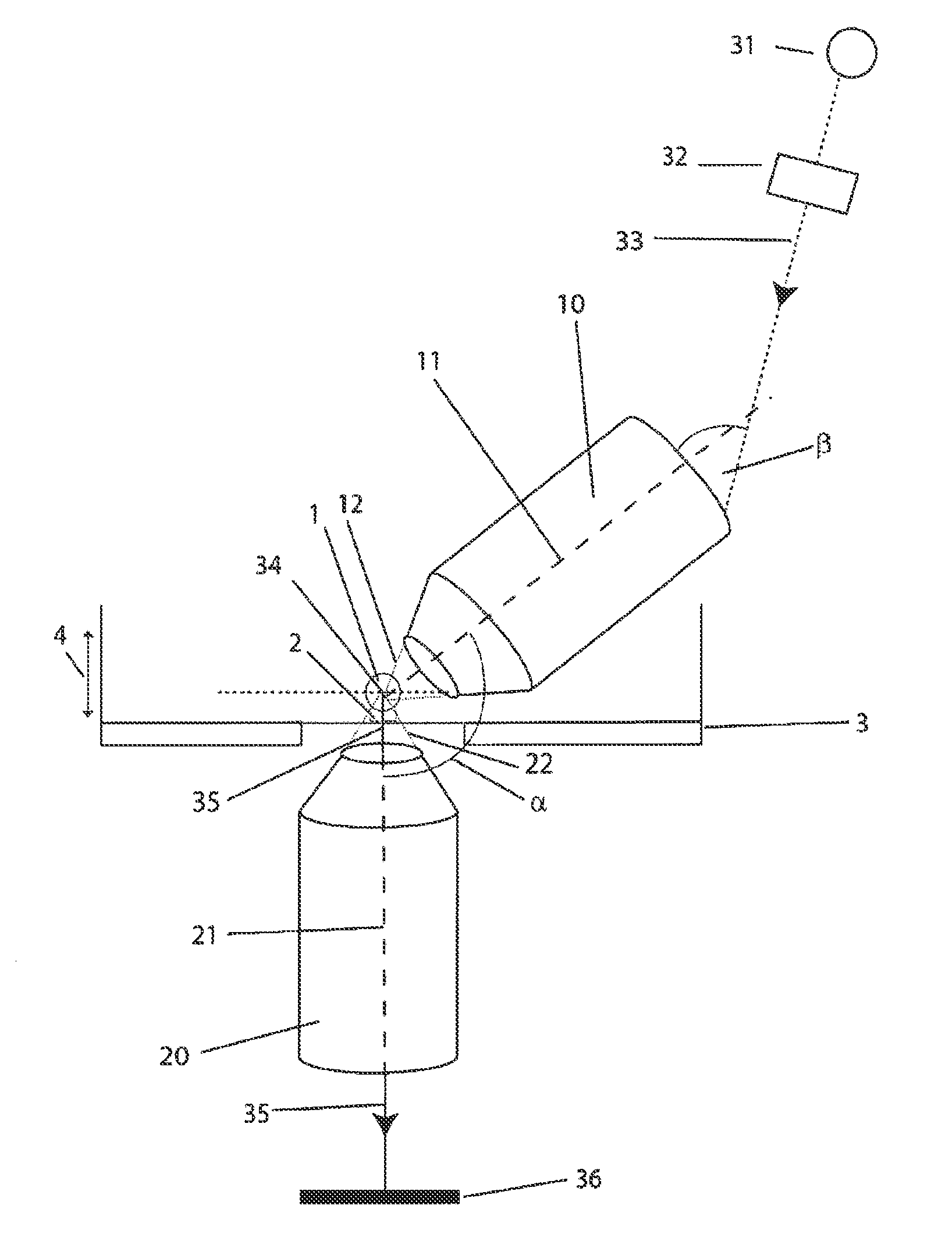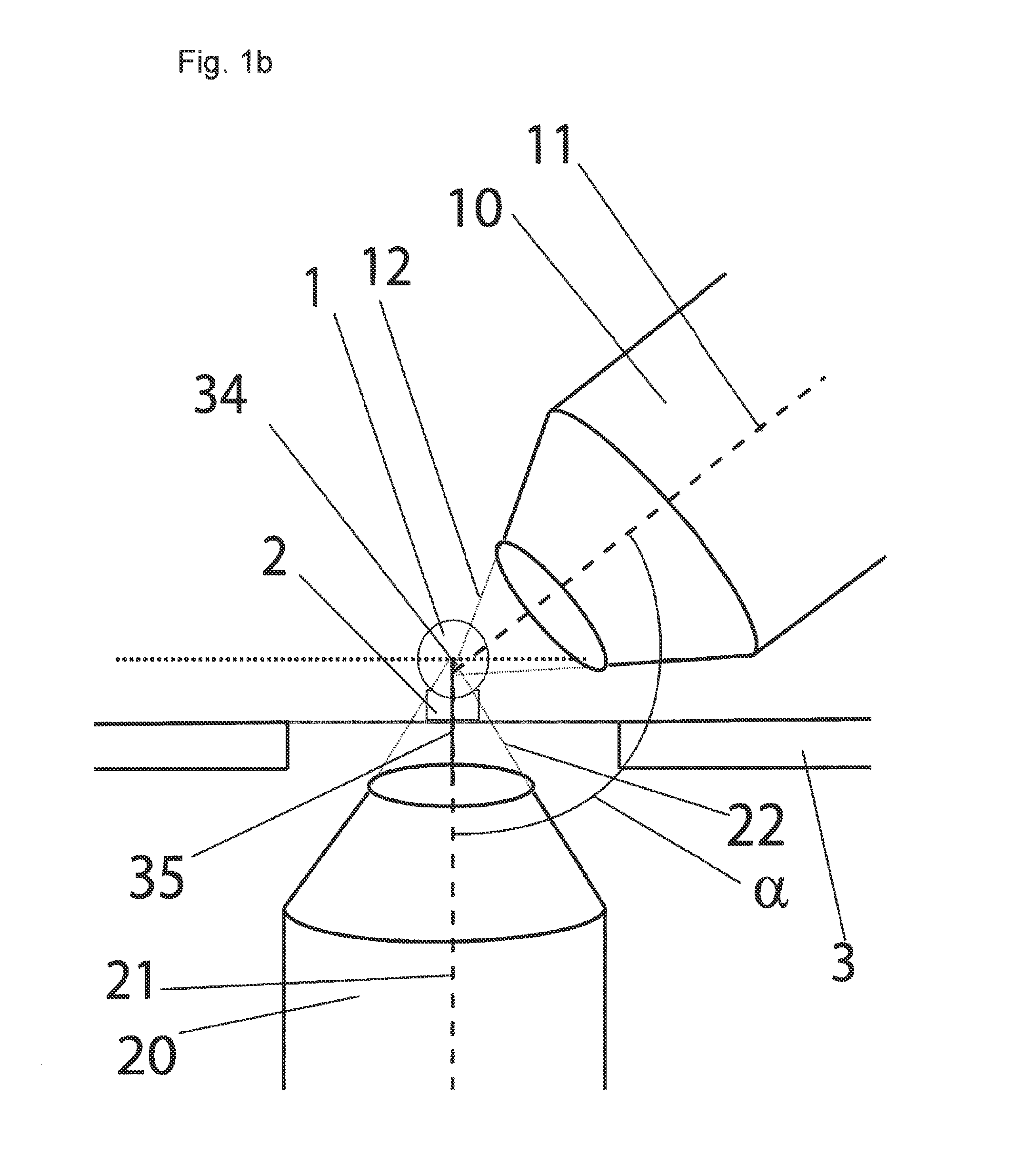Microscope with at least one illuminating beam in the form of a light sheet
a technology of light sheet and microscope, which is applied in the field of microscopes, can solve the problems of disadvantageous positioning of specimens in light sheet, time-consuming method for capturing three-dimensional specimens, and inability to achieve the effect of capturing three-dimensional specimens
- Summary
- Abstract
- Description
- Claims
- Application Information
AI Technical Summary
Benefits of technology
Problems solved by technology
Method used
Image
Examples
second embodiment
[0044]In the second embodiment shown in FIG. 1c), a light sheet is generated in the second lens, which now acts as an illuminating lens 10, by means of devices known from prior art. Here too, the light sheet does not extend parallel to the optical axis of the illuminating lens 10 as described in the prior art, but rather enters the illuminating lens 10 at a wide entry angle β. This arrangement ensures here, too, that at an angle α of approximately 135° of the optical axes 11, 21 of the lenses 10, 20 relative to one another, the light sheet nevertheless extends perpendicularly to the optical axis 21 of the first lens, which acts here as a detection lens 20. Detection of the detection beam 35, which issues from the specimen 1 and passes through the detection lens 20 along the optical axis 21 thereof is also performed here by means of a detector 36.
third embodiment
[0045] shown in Fig. le), a light sheet is generated in the first lens, which acts as an illuminating lens 10, which light sheet here too does not extend parallel to the optical axis of the illuminating lens 10, but rather enters the illuminating lens 10 at a wide entry angle β and outside the optical 11 axis thereof. As a result of this, even at an angle α of approximately 135° of the optical axes 11, 21 of the lenses 10, 20 relative to one another, the light sheet extends perpendicularly to the optical axis 21 and within the focal plane of the second lens, which acts as a first detective lens 20. The first detection beam 35 issuing from the specimen 1 passes through the first detection lens 20 along the optical axis 21 thereof and is guided onto a detector 36 by means of a first deflection mirror 37. At the same time, a second detection beam 35′ issuing from the specimen 1 is guided through the first lens, which acts as a second detection lens 20′ for this purpose, along the optic...
PUM
 Login to View More
Login to View More Abstract
Description
Claims
Application Information
 Login to View More
Login to View More - R&D
- Intellectual Property
- Life Sciences
- Materials
- Tech Scout
- Unparalleled Data Quality
- Higher Quality Content
- 60% Fewer Hallucinations
Browse by: Latest US Patents, China's latest patents, Technical Efficacy Thesaurus, Application Domain, Technology Topic, Popular Technical Reports.
© 2025 PatSnap. All rights reserved.Legal|Privacy policy|Modern Slavery Act Transparency Statement|Sitemap|About US| Contact US: help@patsnap.com



